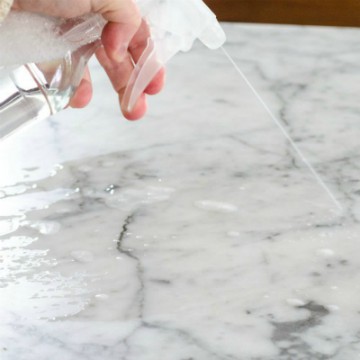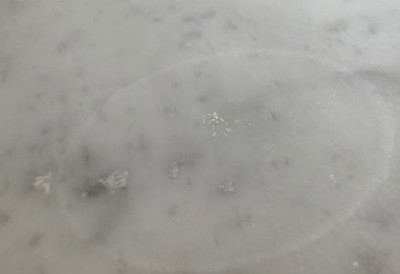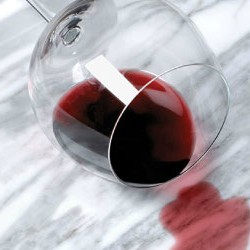How To Clean A Marble Table

Marble is one of the most beautiful surfaces you can have for your coffee or dining table. However, a marble coffee table does have some unique factors to consider when it comes to cleaning and maintenance.
The first thing to do when it comes to cleaning is to make sure your job is as easy as possible. You can do this with some preventative measures to avoid the kind of marks which make cleaning difficult. These marks typically come from spillages of spicy foods or liquids such as red wine. Ring marks from glasses and dishes. And scratches from sliding objects across the surface.
The chances of any of the above factors causing you unnecessary work when cleaning your coffee table can be significantly reduced by using mats on your table for both drinks and plates.
General Cleaning Of Your Marble Coffee or Dining Table
Everyday Maintenance
You should wipe down your marble dining table or coffee table with a dry cloth after every time you use it.
Weekly Maintenance
Then preferably clean the surface with a damp soft cloth at least once a week.
Monthly Maintenance
On a monthly or bi-monthly schedule you want to give your marble coffee or dining table a more thorough cleaning.
What you will need. A soft dry cloth, a non-abrasive sponge1, a plastic bowl, a soft clean rag, soap or specialist stone cleaner.
You can do this by following the steps below:
1. Wipe down the marble top with a soft dry cloth. The purpose of this is to remove any surface dirt and debris.
2. Next you should run a non-abrasive sponge which has been soaked in warm water over the surface. This is to remove any more ingrained dirt from the tables surface. Now you should wipe the table down again with the soft dry cloth.
3. Once the table is dry you should spray soapy water or specialist stone cleaner over the surface then wipe it off with a soft rag.
Annual or Bi-Annual Maintenance
Marble is a porous material and for the best possible protection, sealant2 should be applied to your table on an annual or bi-annual basis. The frequency you want to apply this sealant is dependent upon how often you use the table.
To apply marble sealant all you need to do is to spray the sealant evenly across the table. You should spray the sealant on liberally so the table remains wet for at least 15 minutes. Once 15 minutes have passed take off the excess sealant with a dry absorbent cloth.
Once this is finished you are done, sealing your table is that simple. All it takes is a maximum of 15 minutes per year.
Each marble dining table and marble top coffee table we supply here at Prestige Edition comes with sealant already applied so you will not need to seal it again when it arrives at your home.
All the above information gives you a complete guide to cleaning and maintaining your beautiful marble table tops. By following this advice your marble top will remain beautiful and serve you for decades.
However, we know there are a few problems some marble table owners may encounter from time to time. Below is a guide of what to do in certain scenarios. And how you can deal with such situations with the minimum aggravation.

What to Do if your Marble Table is Scratched
If you find your marble table is scratched the first thing to do is to establish the severity of the scratches. If the scratches are deep you will need professional help. But if the scratches are faint you will be able to fix them yourself.
The most common form of scratches on a marble table are surface scratches. These are typically formed when dirt or debris is scraped across the marble table top. This can be done when food gets stuck under a glass or a plate and is slid along the table. As mentioned earlier using mats for plates and cups will virtually eliminate this problem.
If you find a surface scratch here is what you should do:
1. Wipe down the table with a dry cloth to clear any dirt or debris present on the table top.
2. Take a clean cloth and soak it in warm soapy water.
3. Rinse the cloth until it is moist but not dripping wet.
4. Gently rub the cloth over the affected area.
5. Take a new cloth which is moist and rub it over the surface to remove any soapy water.
6. Take a new dry cloth and rub the affected area in a circular motion to buff it.
7. Apply a specialist marble polish and apply it over the affected area.
If the scratch is still there after this process, spray water on the area and gently rub the affected area with a very fine sandpaper. If this still does not fix the problem you need to seek professional help.`
How to Remove Marble Etching
Marble etching is the physical change which occurs in the surface of the stone when it comes into prolonged contact with acid. The effects of etching will not happen immediately but if the acidic substance is not cleaned quickly etching will occur. Etching will leave dull marks where the acid has corroded the marble’s high polish.
If you notice you have spilled an acidic substance on your marble table follow the steps detailed below under the subheading ‘What to do if you Spill Red Wine on your Marble Table?’. The most common household substances which can cause etching due to their high acid content are:
a) Lemon Juice
b) Red Wine
c) Spicy Sauces
d) Vinegar
e) Orange Juice
f) Household Cleaning Products
If you notice your marble table is suffering from etching here is what you should do. First decide if you want to anything about. If it is a household item the answer is yes you want to fix it. But if the etching is on a marble table at a commercial premise such as a restaurant it may be better to leave it.
If you decide to remove the etching you have two choices. One to get professional help or two try and remove the etching yourself.
If you want to remove the etching yourself here is what you should do:
1. Purchase a specialist marble polishing powder or spray.
2. Apply the polishing powder or spray to a damp cloth.
3. Rub the cloth in circular motions over the affected area for approximately 20 seconds.
4. Rub vigorously back and forth across the area for another 20 seconds.
5. Remove any excess spray or polish from the area.
6. Rinse the area with a damp cloth.
7. Repeat until the etching has gone (this may take several cycles to be removed completely).
If you still cannot remove the etching after several cycles it is time to call a professional stonemason with specialist tooling to remove etching.
How To Remove Water Stains From Marble
It is common to find water stains on your marble surface. This is perfectly normal and nothing to worry about. When you see these water stains or spots it is a good idea to remove them as soon as you can. If left for long periods the water stains can build up and make it easier for other liquids to stick to your marble. This can lead to problems such as etching if anything acidic gets trapped by the hard water build up.
Water spots are mineral deposits on the surface of the marble. Once these deposits are removed your marble will be completely unaffected.
Here is how you can easily remove water stains:
1. Use a damp cloth and soapy water or marble cleaner and rub it over the surface where the water stains are present.
2. Wash off the area with a clean damp cloth.
3. Dry the area with a clean cloth.
4. If this still doesn’t work purchase some soft wire wool and rub it over the area in a circular motion.
If these steps don’t work the marking you have is not from a water stain and is most likely marble etching. Following the steps given above under the subtitle ‘How to Remove Etching’ to resolve this issue.
What to do if you Spill Red Wine on your Marble Table?
If you do spill any liquids on your marble top coffee table you should wipe any excess liquid with kitchen paper. Then run a clean damp cloth across the surface.
If you notice there is some staining after the surface dries the next step is to apply a specialist marble polishing powder or spray3. This spray should be rubbed in circular motions with a soft moist cloth (you will need to add water to the powder).
Once you have rubbed this spray or polish in to your coffee table. The mixture will become dry after 30 seconds to a minute.
Then you want to rub the mixture in circular motions with the same cloth you used before for approximately 20 seconds.
After this you should vigorously rub back and forth over the paste for another 20 seconds.
By this time, the colour should be restored.
All you need to do now is to remove any excess paste with a cloth. Then clean the surface with a damp cloth and to dry it with kitchen paper. If you notice the colour is not restored you should repeat the process again until it is restored.

Products in this Material